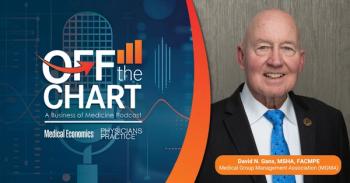
A Journey of a Thousand Miles for Health IT
Lao-tzu said, “A journey of a thousand miles begins with a single step.” This is certainly true for where we are today using technology in healthcare.
In reality it is not as simple as choosing a destination and taking the first step. Where you end up can be affected by the starting point you select, the direction you initially take, and the ease of the journey. After a time it may become clear that the path you have selected led to unexpected turns and that it is, in fact, a path to somewhere other than where you wanted to go. The only way to reverse the effects of a poorly chosen start is to go back and start over but people rarely choose to start over, even when it is possible; the tendency is to labor on and hope for the best.
The fathers of medical informatics - Octo Barnett at Massachusetts General Hospital and Homer Warner at LDS Hospital in Salt Lake City - started in different places, took different directions, and although they gained tremendous insight along the way, where they ended up was inexorably influenced by decisions made prior to departure. What they learned along the way may help others but, for the most part I believe they found themselves unable to make the most of their evolving understanding because they and their institutions became too invested in their original prototypes.
Computer system development between 1955 and 1980 was constrained by severe limitations in the capacity and speed of the hardware as well as its cost. The challenge was to invent methods of programming that would allow something useful to be done. Terseness was essential both in the programming languages and data storage techniques. In order to achieve extreme terseness, a language or data structure must be tailored to the specifics of the job that the computer is expected to perform; anything that is not essential to the completion of the task must be ruthlessly eliminated. Imposing a constraint blocks a pathway that might allow future flexibility.
Barnett and Warner had different destinations in mind. Barnett focused on assisting hospital staff in carrying out the normal daily tasks of patient care. Warner's objective was to develop a decision support system that would apply rules to specific data and issue alerts and recommendations to the staff. Neither considered documenting complete encounters electronically. Doing so would have placed impossible demands on the limited computer resources and neither was of the opinion that doctor's notes could contribute to reaching their objectives.
When MGH eventually felt it necessary to incorporate physician notes into the computer system, it (presumably) did not go back to the drawing board and reconsider the overall design of their system. I'm sure that it was just grafted on (this is an inference and I apologize to MGH if I have mischaracterized the sequence of events).
LDS Hospital has been constructing knowledge frames (decision rules) ever since the system was initiated and, one suspects, it will be building knowledge frames for decades. The level of expertise require to do the work coupled with constantly changing needs and priorities ensure that is a virtually endless and expensive task. Along the way, LDS was forced to graft on functions to support the day-to-day operation of their facilities and one can only assume that by this time it has also incorporated some mechanism for storing narrative notes.
Neither system, as effective as it is at its home institution, has been exported successfully to more than a handful of other facilities (although the MUMPS language from MGH and the concept of knowledge-based decision support from LDS have been applied by others.)
Both Barnett and Warner had clear and insightful early visions of how computers could improve the quality, safety, and efficiency of medicine. The actual destination that each system reached seems to fall somewhat short of those visions because of constraints imposed by their early design choices. One can only speculate about what they could accomplish today if presented with a clean slate and an opportunity to start over.
For more on Daniel Essin and our other Practice Notes bloggers, click
Newsletter
Optimize your practice with the Physicians Practice newsletter, offering management pearls, leadership tips, and business strategies tailored for practice administrators and physicians of any specialty.










